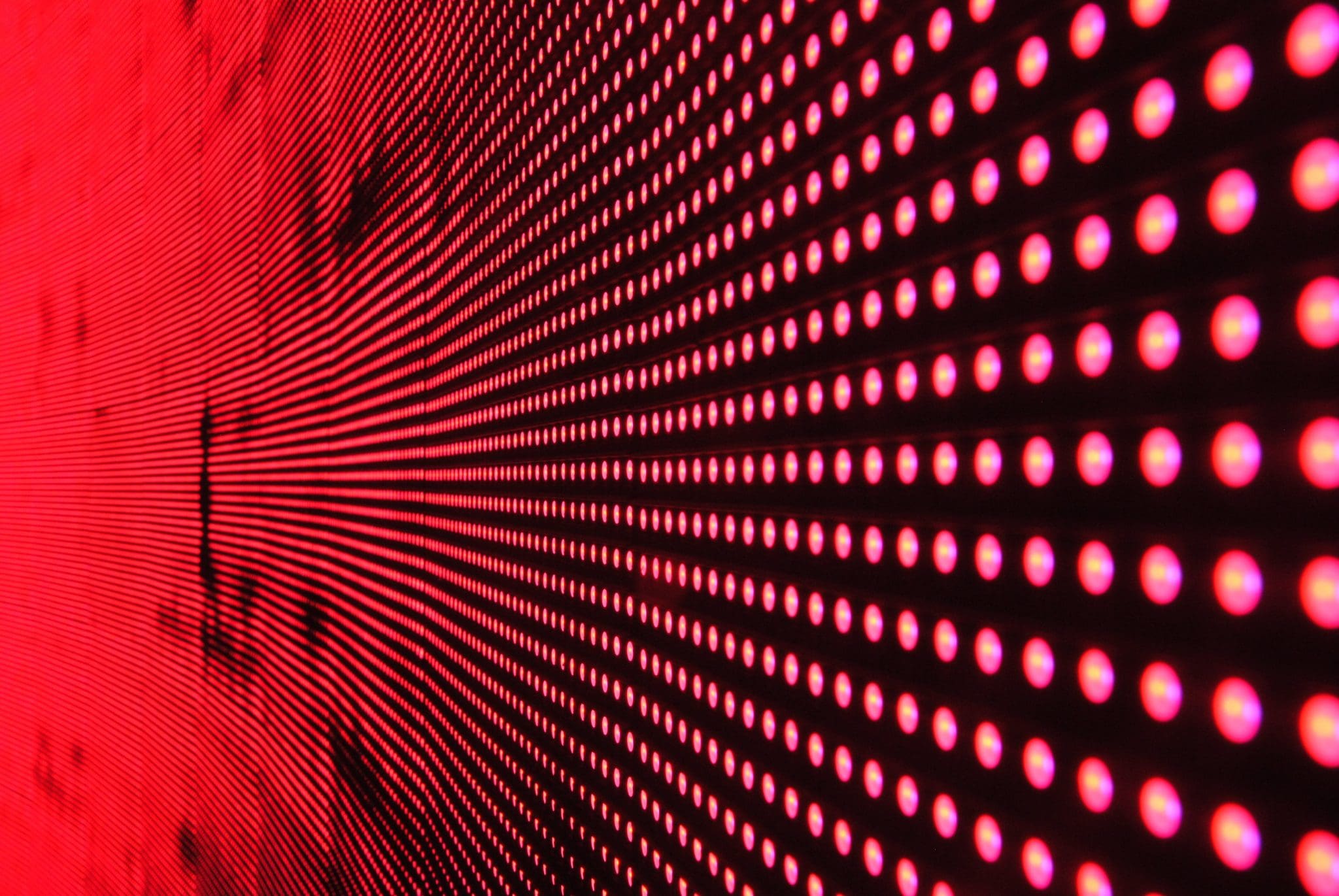Full Disclosure: Clicking on these links could mean a tiny commission for me, at no extra cost to you.
The quest for effective anxiety relief methods has led to the exploration of various therapeutic approaches, with Red Light Therapy (RLT) emerging as a potential contender. Known scientifically as photobiomodulation, RLT uses low wavelength red light to address physical ailments, and its recent foray into mental health treatment sparks curiosity and hope.
As society grapples with increasing rates of anxiety disorders, understanding the efficacy of RLT in this context is not just a scientific pursuit, but a necessary exploration to potentially enrich the spectrum of treatment options available. With its roots in skin and wound treatment, RLT’s evolution into a potential tool for mental health and wellbeing represents a fascinating intersection of technology and psychology.
The question of whether Red Light Therapy can offer hope for those battling anxiety is an intriguing and pertinent inquiry in the world of modern therapeutic practices.
Understanding Red Light Therapy
Red Light Therapy (RLT), known scientifically as photobiomodulation, represents a groundbreaking approach in treating various health conditions.
Initially used for skin rejuvenation and healing wounds, RLT has extended its reach into the mental health arena, offering potential relief for conditions like anxiety.
Historical Context and Development of RLT
The evolution of RLT dates back to the 1960s when it was first used in phototherapy. Over the years, its application expanded from treating skin conditions and accelerating wound healing to addressing muscle aches and joint pain. More recently, the scope of RLT has broadened to include mental health treatment, particularly for mood disorders and anxiety.
Theoretical Foundations of RLT
The premise of RLT lies in its use of specific wavelengths of red light, typically between 600 and 1000 nanometers. This light range is believed to penetrate skin and tissue, reaching deep into cells. The theory behind RLT is grounded in its interaction with mitochondria, the powerhouse of the cell, and its influence on cellular energy production.
The Science Behind RLT
Impact on Mitochondrial Function
At the heart of RLT’s therapeutic effects is its ability to penetrate skin layers and positively impact cellular energy production.
This interaction primarily occurs in the mitochondria, where RLT is believed to stimulate a biochemical effect that increases the efficiency of the cellular respiration process.
By enhancing adenosine triphosphate (ATP) production, cells gain more energy, aiding in their repair and rejuvenation.
Reduction in Inflammation and Promotion of Regeneration
One of the key benefits of improved mitochondrial function is a reduction in inflammation, a common underlying factor in many health issues, including mental health disorders.
Additionally, RLT is thought to promote cellular regeneration and healing, which is particularly beneficial in wound healing and tissue repair.
RLT and Mental Health
Exploring RLT’s Role in Treating Anxiety
Recent clinical studies and trials have begun to explore the effects of RLT on mental health conditions, with a significant focus on anxiety and mood disorders. The hypothesis is that RLT’s ability to reduce inflammation and enhance cellular energy could translate to improvements in mental health.
Summary of Key Research Findings
Several studies have reported positive outcomes in using RLT for anxiety and depression.
For instance, research has shown that RLT may help in reducing symptoms of depression and anxiety, potentially due to its role in reducing inflammation, a factor often linked with mental health disorders.
Additionally, the calming effect of light therapy on the nervous system may also play a role in its effectiveness against anxiety.
Implications for Anxiety Treatment
The implications of these findings are profound, suggesting that RLT could offer a non-invasive, drug-free alternative or complement to traditional anxiety treatments. As research continues to evolve, RLT could become a mainstream treatment option for those seeking relief from anxiety symptoms.
The exploration of RLT in treating anxiety is rooted in its scientifically-backed impact on cellular processes and inflammation reduction. The ongoing research into its effectiveness against mental health disorders, particularly anxiety, is promising, indicating a potential shift in how these conditions are treated.
Red Light Therapy at Home and at the Clinic: A Short Comparison
The accessibility of RLT has expanded, with options now available both in professional clinical settings and for at-home use.
At-Home RLT Devices: Exploring Options and Efficacy
At-home Red Light Therapy (RLT) devices offer a convenient way to access the benefits of RLT for anxiety relief. These devices come in various forms, such as handheld units, wearable masks, standing panels, and even full-body beds.
Handheld units are great for targeted therapy, while masks are specially designed for facial treatment but may also aid in mood regulation. Panels and beds cover larger body areas, suitable for a more comprehensive therapy session.
Key features to look for include adjustable light intensity, specific wavelengths optimized for mental health benefits, timer functions, and ease of use.
Safety is paramount, so selecting FDA-cleared or medically approved devices is crucial. Additionally, understanding the proper usage guidelines, such as treatment duration and frequency, is vital to ensure both safety and effectiveness.
Regarding efficacy, at-home RLT devices have shown promise in managing anxiety symptoms. They can provide a soothing experience and may help in regulating biological processes linked to mood and stress. However, the level of efficacy can vary based on the device’s quality and the individual’s specific needs and conditions.
Clinical RLT Treatments: Professional Approach and Benefits
In contrast to at-home devices, clinical RLT treatments involve more sophisticated equipment and are administered by trained professionals. These treatments often use higher-powered lights and offer a more controlled environment for therapy. This can potentially lead to more significant improvements in anxiety symptoms due to the precision and intensity of the treatment.
One of the primary benefits of clinical RLT is the expertise provided by healthcare professionals. They can tailor the treatment to the individual’s specific needs, monitor progress, and adjust protocols for optimal results.
Additionally, clinical settings ensure that the therapy is conducted safely, with proper precautions and under medical supervision.
Clinical RLT treatments may also incorporate a comprehensive approach, combining RLT with other therapeutic modalities for a more holistic treatment plan. This can include guidance on lifestyle adjustments, stress management techniques, and other complementary therapies.
Potential Limitations and Considerations
While promising, RLT is not without its limitations. This section will address potential drawbacks, including the variability in individual responses, the need for continued research, and considerations when choosing RLT as a treatment option.
Research Gaps and Individual Variability in RLT Response
While Red Light Therapy (RLT) shows promise for anxiety relief, significant research gaps remain. Current studies often involve small sample sizes and short-term follow-up, limiting the ability to generalize findings to broader populations.
There’s also a lack of standardized protocols in terms of wavelength, intensity, and duration of exposure, making it challenging to compare results across different studies.
Individual differences significantly influence RLT’s effectiveness. Factors such as skin type, severity of symptoms, and underlying health conditions can affect how a person responds to RLT.
For instance, individuals with certain skin conditions may experience different effects, and the severity of anxiety symptoms can impact how quickly and effectively one responds to the therapy.
Personal biological factors, like skin sensitivity to light and overall health, also play a crucial role in determining the therapy’s success.
Choosing the Appropriate RLT Approach
When considering RLT for anxiety, several factors should guide the decision-making process. The severity of anxiety symptoms is paramount; those with mild symptoms may find at-home devices sufficient, while individuals with more severe or complex anxiety issues might benefit more from professional clinical treatments.
Personal preferences and lifestyle also influence the choice. At-home RLT devices offer convenience and privacy, which might appeal to those with busy schedules or a preference for home-based treatments. However, these devices vary in quality and effectiveness, so thorough research and possibly consultation with a healthcare provider are advised before purchase.
On the other hand, clinical RLT treatments, though potentially more effective due to the higher intensity of light and professional supervision, require a commitment of time and, often, a higher financial investment.
These sessions also offer the advantage of being tailored to individual needs, with professionals adjusting the treatment based on response and progress.
Ultimately, the decision between at-home and clinical RLT treatments should be made after considering the individual’s specific needs, lifestyle, and the extent of their anxiety symptoms. It’s also advisable to consult with a healthcare professional who can provide insights based on the latest research and clinical experiences with RLT.
Wrapping Up
Red Light Therapy emerges as a promising, albeit still emerging, treatment for anxiety. Its benefits, such as its non-invasive nature and minimal side effects, make it an attractive option. However, potential users must weigh these advantages against the current research limitations and consider their personal health circumstances.
Ultimately, RLT, whether at home or in a clinical setting, offers a novel avenue for those seeking alternative or complementary approaches to anxiety management.













